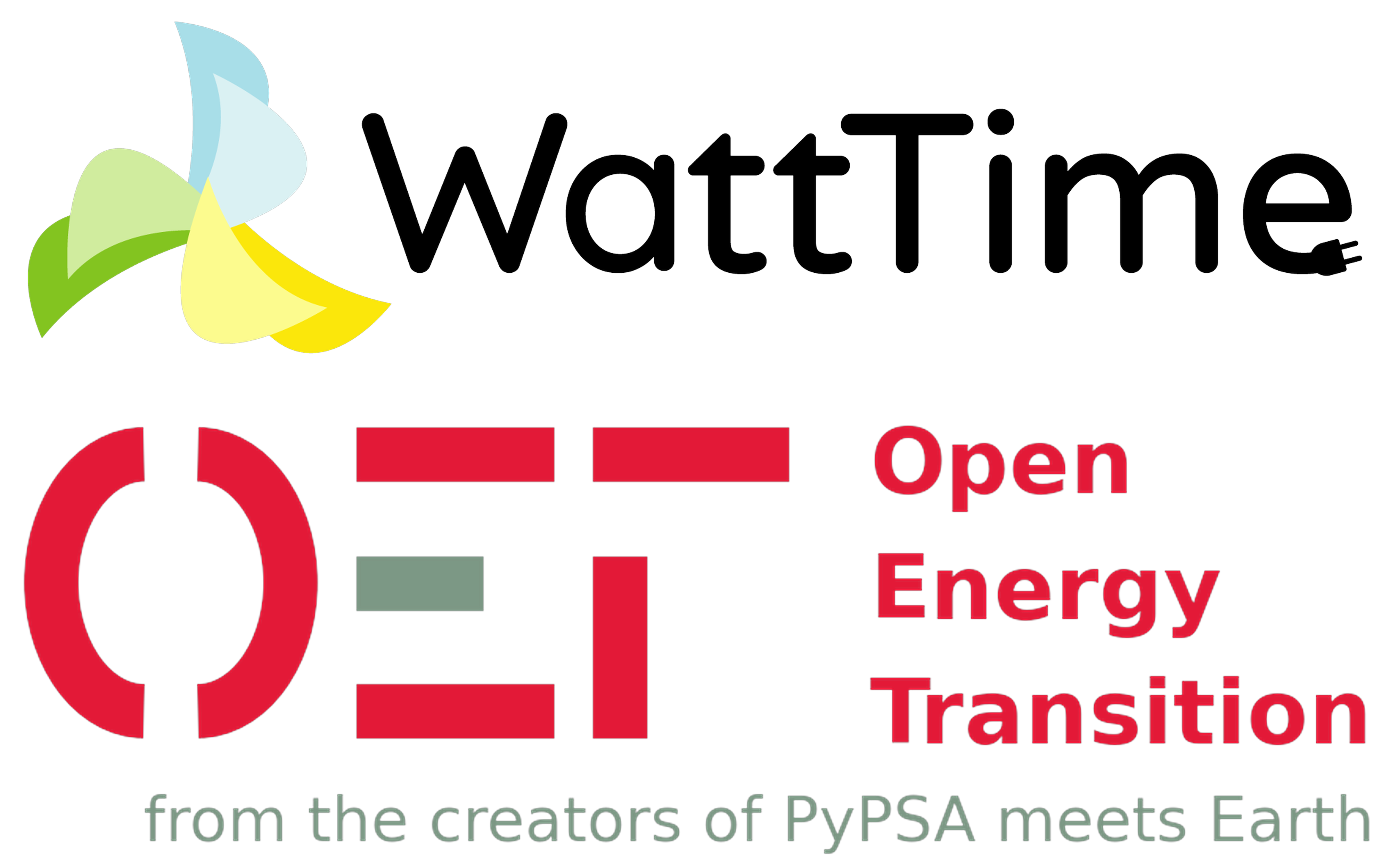Scenario Configuration#
This is the scenario configuration used in the WattTime Impact Metastudy.
Note
The PyPSA-Eur configuration files follow a pyramid-like structure, where the parameters in the highest configuration file add to and override those in the configuration file below it. The order is as follows:
scenarios.meta-{xH}.yaml (this section)
Thus, for example changes specified in scenario.meta.yaml will add to and override configurations in config.meta.yaml and so on.
Baseline Scenarios#
The following table provide an overview of the baseline scenarios:
# |
Scenario name |
Planning horizon |
RES targets |
|---|---|---|---|
1 |
baseline-2025-nH |
2025 |
No |
2 |
baseline-2030-nH |
2030 |
Yes |
3 |
baseline-2030-NoResTargets-nH |
2030 |
No |
Key similarities across all baseline scenarios that distinguish them from the default PyPSA-Eur results:
Load demand is split into low-voltage demand and commercial/industrial (CI) demand at the high-voltage level for all nodes.
Transmission capacities between country buses are fixed, including additional capacities specified in the TYNDP.
The model considers electricity only (no sector coupling).
Fossil fuel prices are customized to reflect estimates for the year 2025.
Key differences by year:
2025: No coal phase-outs have been initiated.
2030: 17 countries have achieved their coal phase-out targets. See `Beyond Fossil Fuels Europe's Coal Exit<https://beyondfossilfuels.org/europes-coal-exit/>`_.
When the RES target is referenced in this table, it implies that:
The model enforces the EU-wide renewable generation share target of 72%.
Country-specific renewable capacity targets are applied.
National renewable generation share targets are not considered (i.e., deactivated).
Annual Volume Matching Scenarios#
The following table provide an overview of the annual volume matching scenarios:
# |
Scenario name |
Baseline |
Planning horizon |
RES targets |
Location scope |
|---|---|---|---|---|---|
1 |
vol-match-2025-ci25-nH |
baseline-2025-nH |
2025 |
No |
Continent |
2 |
vol-match-2030-ci25-nH |
baseline-2030-nH |
2030 |
Yes |
Continent |
3 |
vol-match-2030-country-ci25-nH |
baseline-2030-nH |
2030 |
Yes |
Country |
4 |
vol-match-2030-NoResTargets-ci25-nH |
baseline-2030-NoResTargets-nH |
2030 |
No |
Continent |
Key similarities across these annual volume matching scenarios:
Energy matching is set at 100%.
Each country sources 25% of its commercial and industrial (CI) demand domestically.
All procurement counts toward renewable energy (RES) targets (no additionality).
The sensitivities explore two main aspects:
The impact of limiting procurement strictly to within individual countries.
The consequences of not meeting renewable energy (RES) targets.
24/7 Carbon Free Energy Scenarios#
The following table provide an overview of the 24/7 carbon free energy scenarios:
# |
Scenario name |
Baseline |
Hourly Matching |
Planning horizon |
RES targets |
Location scope |
|---|---|---|---|---|---|---|
1 |
247-cfe-2025-ci25-cfe90-nH |
baseline-2025-nH |
90% |
2025 |
No |
Node |
2 |
247-cfe-2025-ci25-cfe100-nH |
baseline-2025-nH |
100% |
2025 |
No |
Node |
3 |
247-cfe-2030-ci25-cfe90-nH |
baseline-2030-nH |
90% |
2030 |
Yes |
Node |
4 |
247-cfe-2030-ci25-cfe100-nH |
baseline-2030-nH |
100% |
2030 |
Yes |
Node |
Key similarities across these annual volume matching scenarios:
All procurement counts toward renewable energy (RES) targets (no additionality).
The sensitivities explore two main aspects:
Different energy matching levels, set at either 90% or 100%.
The year of procurement, which affects whether RES targets are in place.
Emission Matching Scenarios#
The following table provide an overview of the emission matching scenarios:
# |
Scenario name |
Baseline |
Signal Source |
Signal Type |
Planning horizon |
RES targets |
Location scope |
|---|---|---|---|---|---|---|---|
1 |
emi-match-2025-ci25-data-moer-nH |
baseline-2025-nH |
Statistics |
MOER |
2025 |
No |
Continent |
2 |
emi-match-2025-ci25-data-mber-nH |
baseline-2025-nH |
Statistics |
MBER |
2025 |
No |
Continent |
3 |
emi-match-2025-ci25-data-cmer-nH |
baseline-2025-nH |
Statistics |
CMER |
2025 |
No |
Continent |
4 |
emi-match-2025-ci25-data-aer-nH |
baseline-2025-nH |
Statistics |
AER |
2025 |
No |
Continent |
5 |
emi-match-2030-ci25-data-moer-nH |
baseline-2030-nH |
Model |
MOER |
2030 |
No |
Continent |
6 |
emi-match-2030-ci25-data-mber-nH |
baseline-2030-nH |
Model |
MBER |
2030 |
No |
Continent |
7 |
emi-match-2030-ci25-data-cmer-nH |
baseline-2030-nH |
Model |
CMER |
2030 |
No |
Continent |
8 |
emi-match-2030-ci25-data-aer-nH |
baseline-2030-nH |
Model |
AER |
2030 |
No |
Continent |
Key similarities across these emission matching scenarios:
Energy matching is set at 100%.
Each country sources 25% of its commercial and industrial (CI) demand domestically.
All procurement counts toward renewable energy (RES) targets (no additionality).
The sensitivities explore two main aspects:
The type of emission matching signal used (MOER, MBER, CMER, AER).
Whether the signal is derived from recent historical data or from long-term model projections.
